Lisbon's both an easy place to wander around, collecting images and impressions and 'slices of life,' and a hard slog to wander around, since most of the city, and all but a fringe of the historic center, spills down some of the steepest urban hills I've encountered.
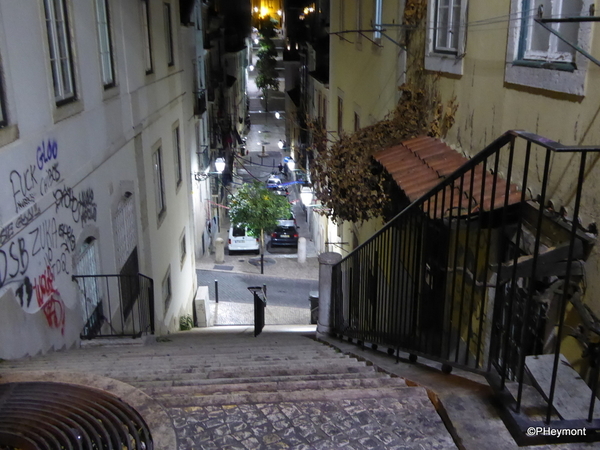
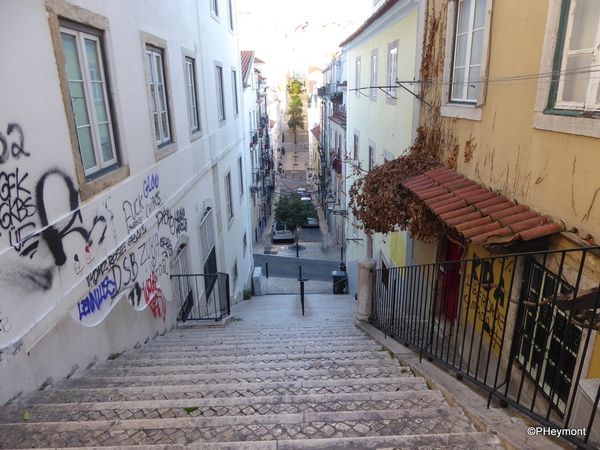
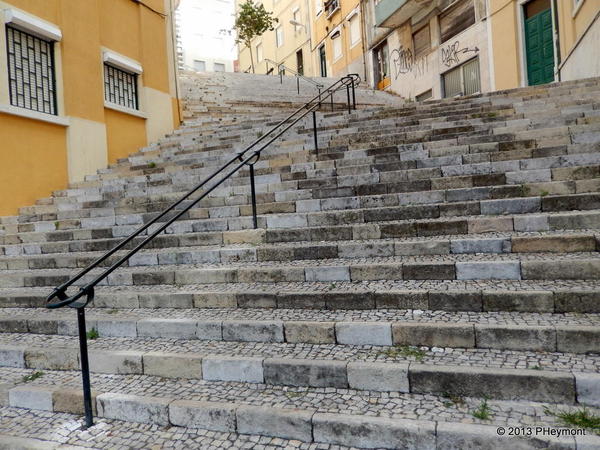
So steep, in fact, that in many areas normal trams give way to funiculars and roads give way to stairs. But the hills also grant sweeping vistas, such as this one, looking down toward the Tejo river through King Edward VII Park. Yes, the English king...they really liked him here when he visited in 1902. Enough to rename Liberty Park.
Looking up also produces some interesting views. Here's a view from near the Military Museum, with the flowery roof of one building and the back of an imposing mansion that sits on the next street, and whose front is on the one past that. Below, the hilltop Saint George's Castle, framed by a crane marking a current building boom in the city.
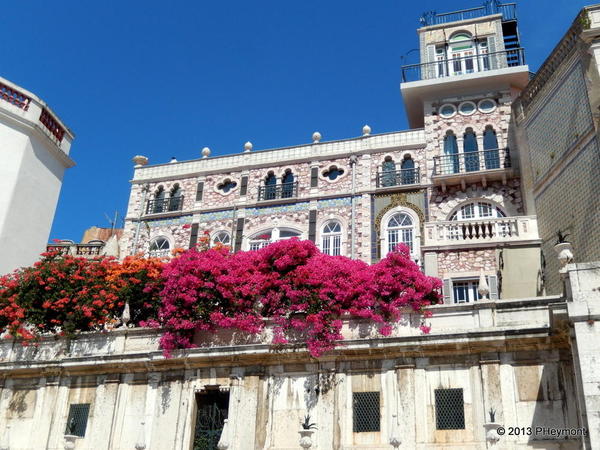
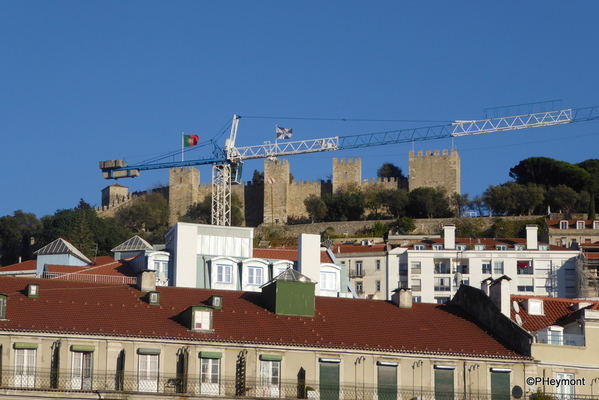
The area just below the castle, the Alfama, is Lisbon's oldest neighborhood, a warren of narrow streets with buildings going back, in some cases, to Moorish rule hundreds of years ago. It's the oldest, because all the neighborhoods along the shore below it were destroyed in the earthquake of 1755 and the tidal wave and fires that followed.
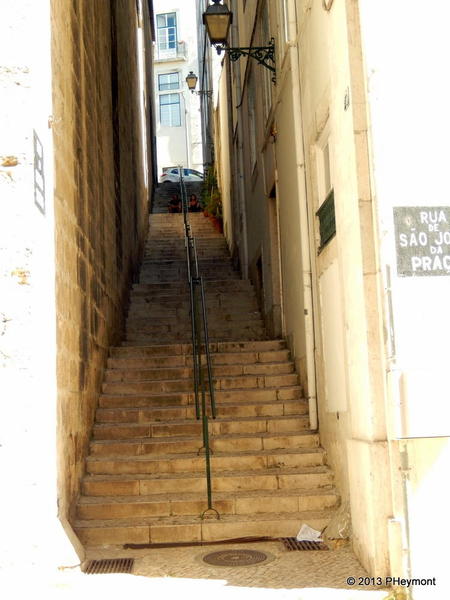
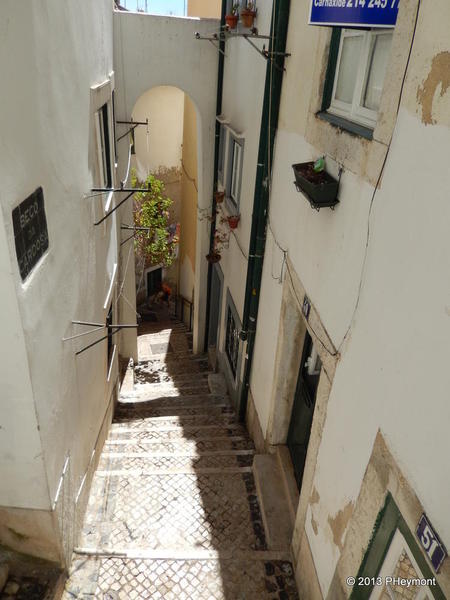
In parts of the Alfama, the streets that aren't stairs are too narrow for normal-sized buses, and the iconic yellow Lisbon streetcar (Electrico 28) that is a tourist favorite as well as vital local transport, barely squeezes through. It's seen here at the roomy end of the line. For bus tours of the Alfama, there's also a mini open-top tour bus!
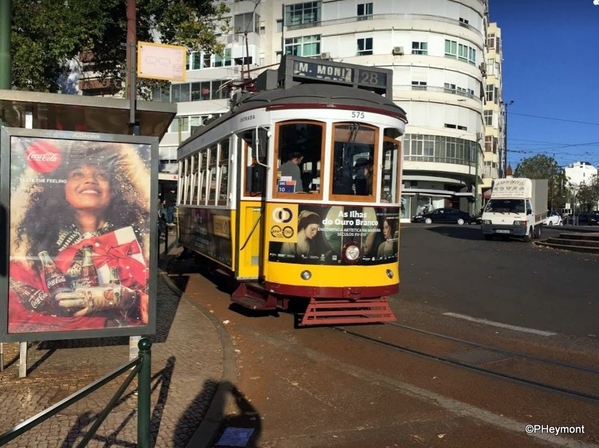
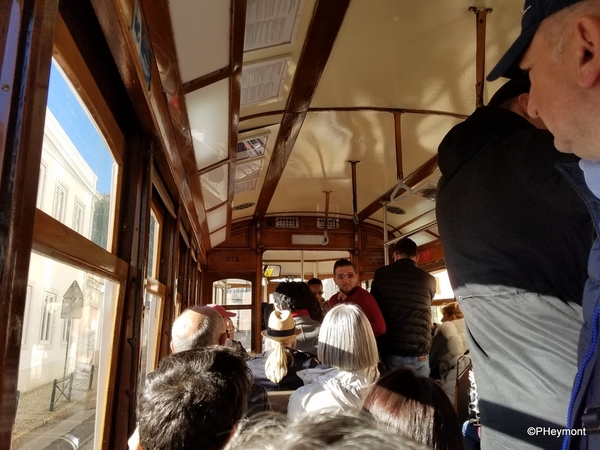

The more monumental, and flatter, parts of the city are along the waterfront, and were all constructed after 1755 on what remained of the shore. The redesign and rebuilding of the city, under the autocratic supervision of the Marquis de Pombal, is one of the world's first conscious urban renewal projects.
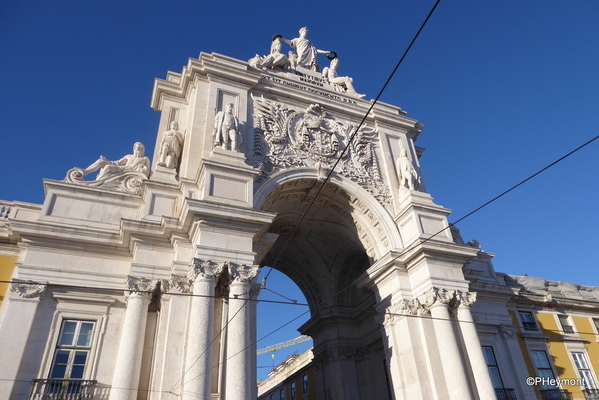
Pombal, the Haussmann of his time, and like Baron Haussmann both hated and revered in his time, not only laid out new districts, such as the Baixa, and buildings; he also devised a building method, the Pombaline Cage, that is arguably the first successful attempt at earthquake-proof construction. Sadly, just this month, Portuguese architects found it necessary to warn that recent gentrifiers, who want larger rooms, have been cutting through the cages and destroying the earthquake protection. How little we learn...
Tile doesn't just figure in the pavements in Lisbon; it's a common facade material for buildings large and small all over the city, and is celebrated in a spectacular National Tile Museum.
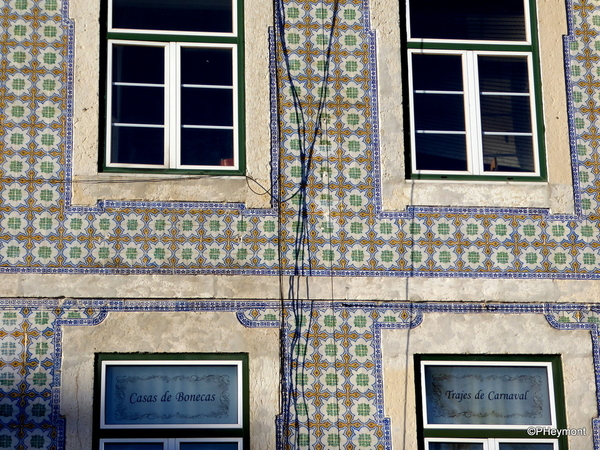
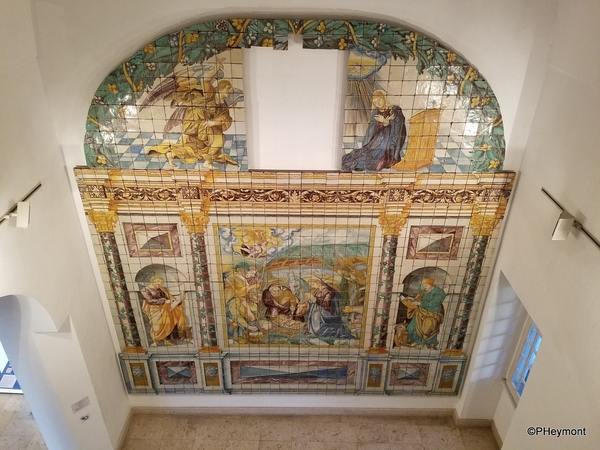
Since the tile museum is in a former convent, it has a large chapel attached. The decor there isn't all tile, but it is amazing.
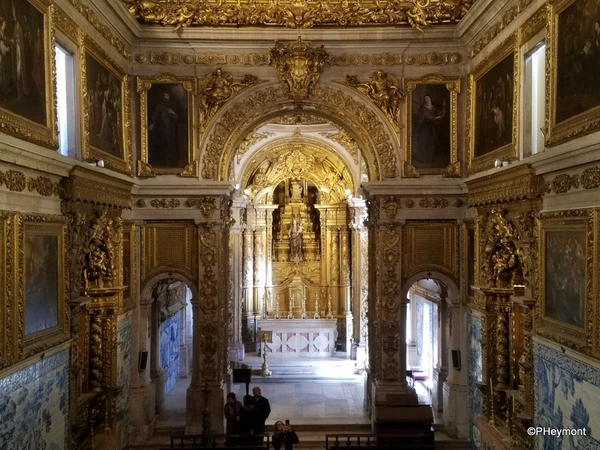
More tile here, in the entrance of the Ribeira Market. It's Lisbon's central market, although in recent years it's lost its role as a wholesale market, and its space is now divided, with one hall given over to the "traditional market" and the other to a gourmet upscale food hall sponsored by Time Out magazine. The exterior, facing the waterfront, is pretty spectacular, too.
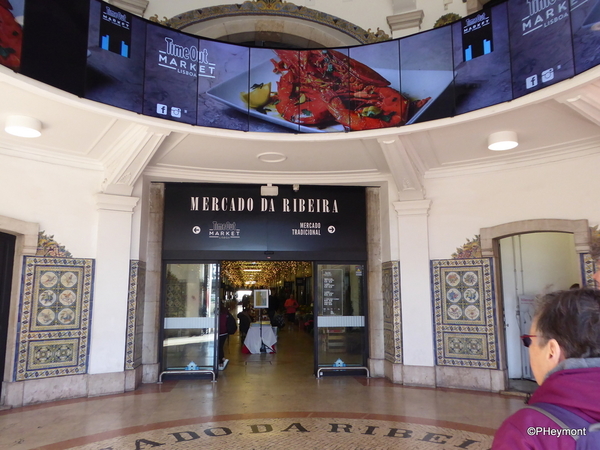
Aside from its trams, buses and Metro, Lisbon has a fleet of cross-river ferries that not only lead to interesting places, food and views on the other side, but give you a chance for a head-on view of the city from the water. Or, at dusk, to look down the river to the April 25 Bridge, a near-twin of San Francisco's Golden Gate.
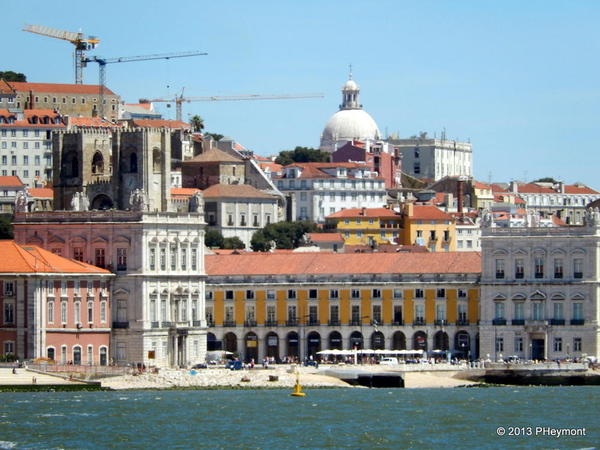
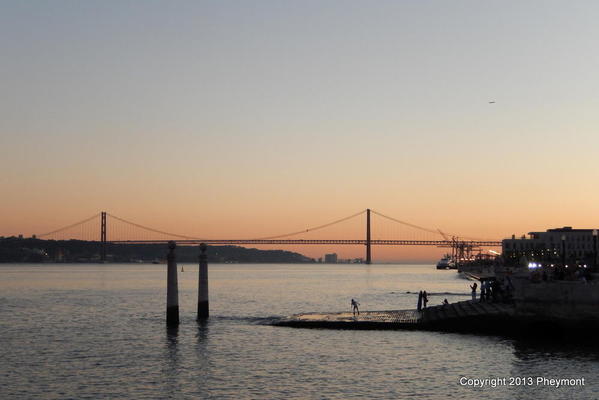
Back on land, here's one of my favorites: the entrance to the 1887 Rossio rail station, one of the city's main stations, with this wonderful entrance, which combines Art Nouveau forms with Portugal's 16th-century Manueline style. Lisbon's hills are a factor here. Trains reach the station via a mile-and-a-half long tunnel—but when you enter the station, you have to go up three floors to get to the trains!
I've written before about Portuguese food, so not a lot here, but if you happen to be around Largo do Chiado, just up the hills from Baixa, and you hear a small bell ringing, be prepared to join the rush or clear the way. A small shop with but a single product—creamy, custardy pasteis de nata—rings the bell to signal new hot trays coming from the oven. Impossibly good!
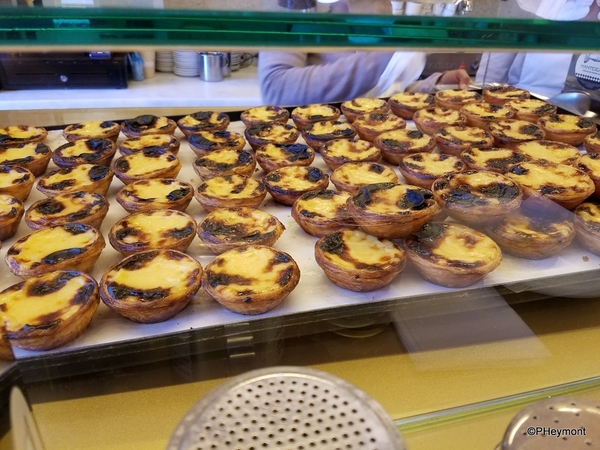
Of course, it's not the only nearby food. There are plenty of cafes nearby, and if you can't find a seat, it's apparently not unknown to sit off to the side on your own, though it may take some brass to do so... (Sorry, pun-haters)
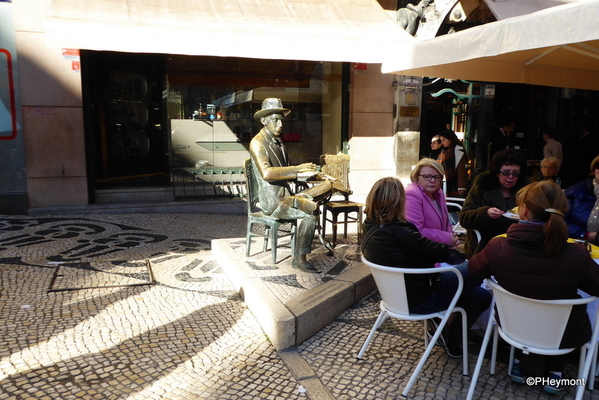
Nearby, a sizeable food market with pastry, coffee and chocolate at counters to consume on the spot or carry away. We stopped in on a cold day while waiting for a bus, and found that everyone else had, too!
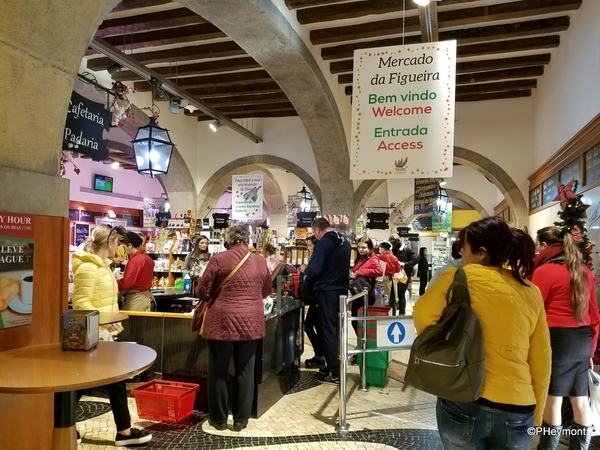
Some food issues may be a bit confused...or is it just language?
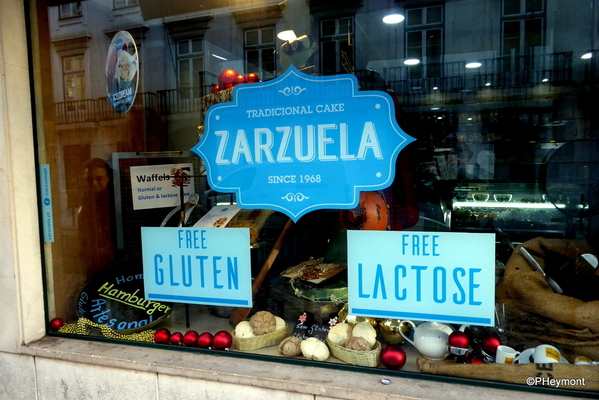
Our recent visit was just before Christmas, and as the days went by, more and more lights and decorations appeared around the city. On our last night, we spotted this heart-warming holiday scene to take home.

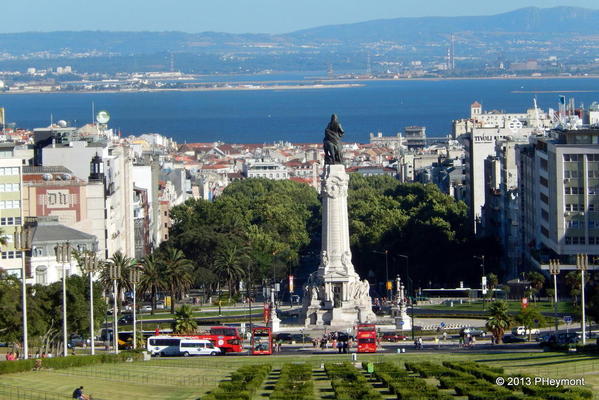
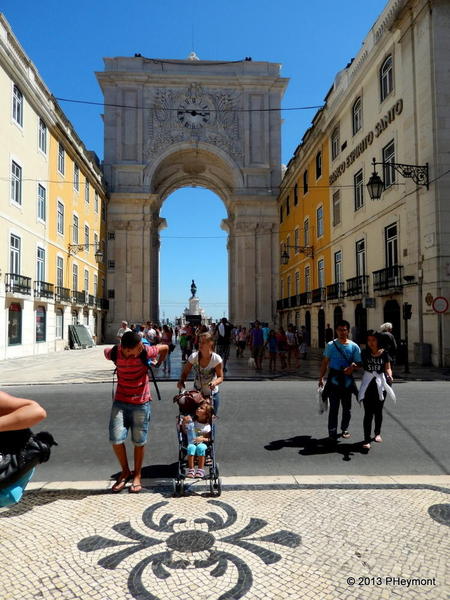
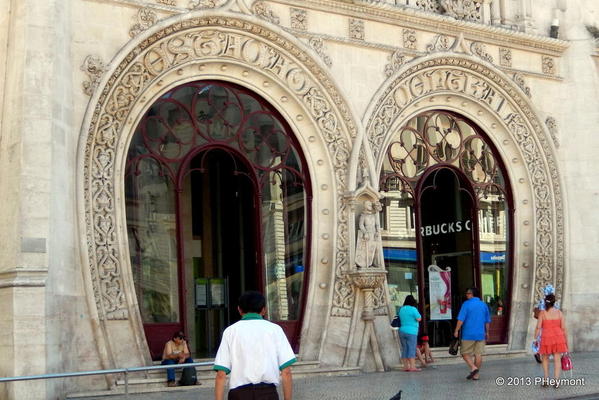
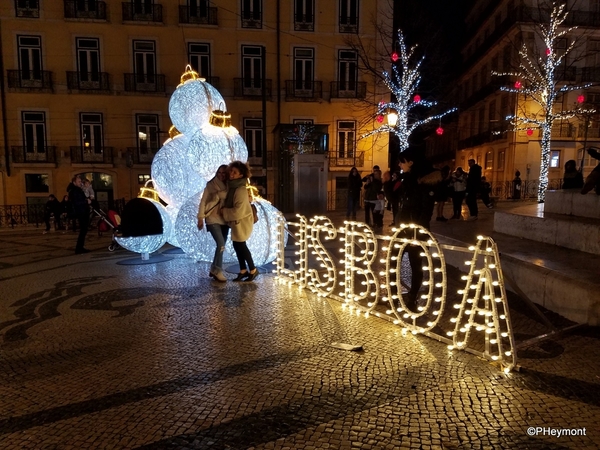









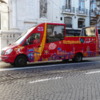


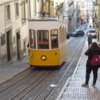


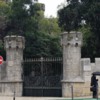






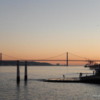





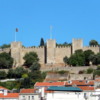
Comments (0)